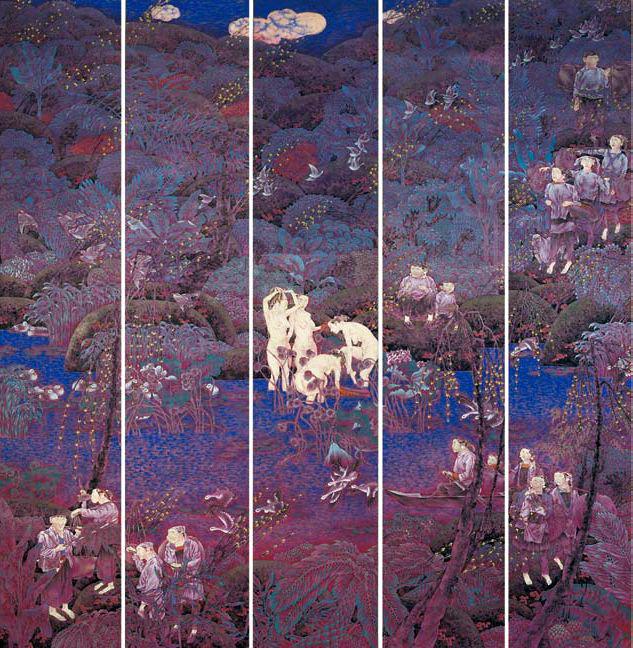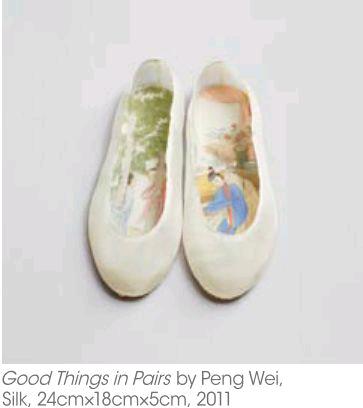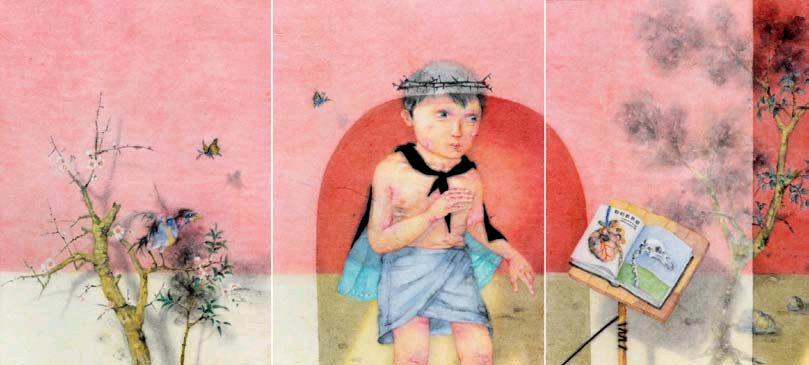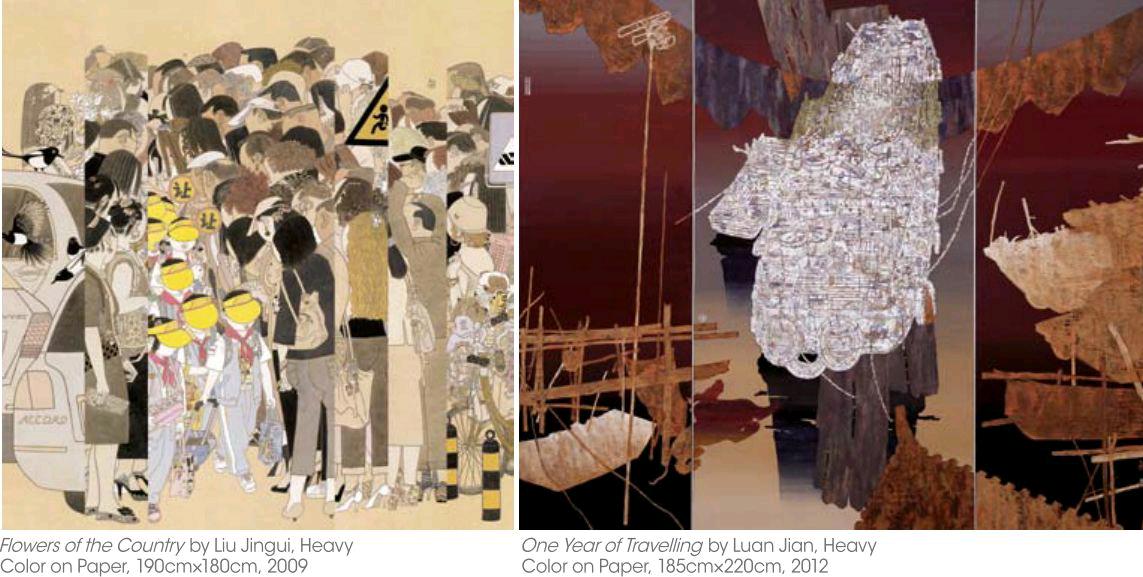Modernizing Gongbi
by+Yi+Mei

Gongbi, characterized by its laborious process and graphic appearance, is one of the most representative styles of tradi- tional Chinese painting. But past experience with traditional Chinese painting hardly has any connection to the modern lives of most. In order to rejuvenate this traditional art and adapt it to a more modern and international environment, Chinese contemporary gongbi artists are exploring new methods of breaking old barriers.
Titling an exhibition “Gongbi in the Modern Era” implies two goals. One is modernizing the content of gongbi painting. When talking about gongbi, most think of traditional subjects such as flowers, birds, fish, heroes and beauty. In this exhibition, subjects range from social life to artistic and cultural landscapes, and installations and sculptures were also displayed. The second goal is modernizing gongbi techniques. Gongbi is known for some standard drawing methods like the frequent usage of lines, which results in a rigid formula. Artists in this exhibition introduce heavy colors popular in Japanese paintings as well as elements from the West in terms of concepts, skills and materials.
“Gongbi is in a transitional phase,”asserts Fan Dian, director of the Exhibition Planning Commission and Curator of National Art Museum of China. “Though a traditional Chinese art, gongbi is not confined to traditional subjects but open to depicting modern concern and todays reality. To some degree, it even has the potential to integrate with todays most cuttingedge art. Gongbis material and form are open too. Preserving the essence of gongbi while expanding its possibilities injects t practice with enough vitality to thrive.”
he
Artist Jiang Jian believes artists should inherit the spirit and philosophy of the art as well as the skills. “Gongbi is not a set in stone,” he declares. “I consider it a medium rather than a painting school. Gongbi should be displayed alongsideother media and address the same social problems. As a member of modern society, when I get an idea, if I decide that gongbi can express my idea, I can make it happen and the work can be valua ble. Gongbi is a tool that can help us as we preserve our heritage. ”
The exhibition includes 400 works from 146 artists, 18 of whom were specially invited, 60 academic nominated artists and 68 selected artists, covering almost every active gongbi artist of every age. Zhu Xiaojun, a member of the organizing com- mittee, noted that the exhibition also invited Yuan Jai from Taiwan and Li Huayi, an overseas artist, to display their contributions to the arts evolution since the 1980s.
After 2005, Chinese contemporary art witnessed a rapid rise, with increasing interest in oil painting, sculpture and installation, concepts which were introduced from the West. Traditional Chinese painting has become somewhat marginalized. But after the economic crisis of 2008, contemporary oil painting and conceptual art entered an era of slow decline. Since then, from as- pects of both market and academic value, traditional Chinese art has regained some clout. An advocate for elaborate accuracy, gongbi remains a stand-out in a society sated with fast-food art.
“People always neglect the value of time during their busy lives, which results in questionable cultural consumption,”Curator Fan says. “This event intends to extract the cultural spirit of gongbi in order to better guide society, appreciate delicacy, and raise public aesthetic literacy. This is the social value of gongbi.”
“I believe this exhibition will refresh gongbis image and exert tremendous influence on the development of this art,” adds Feng Dazhong, director of the Organizing Commission and president of China Gongbi Association.

China Pictorial2014年1期
